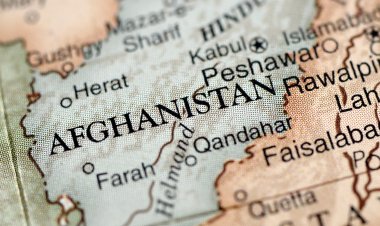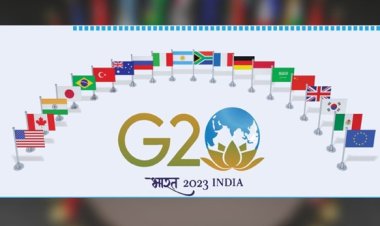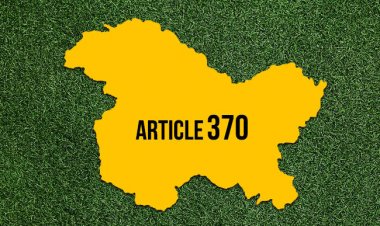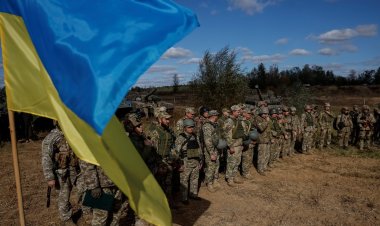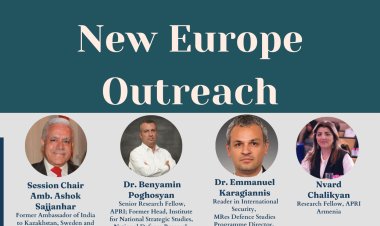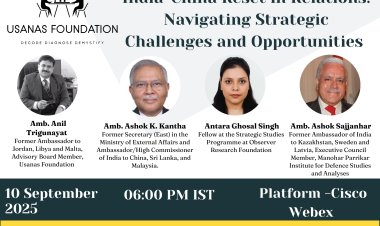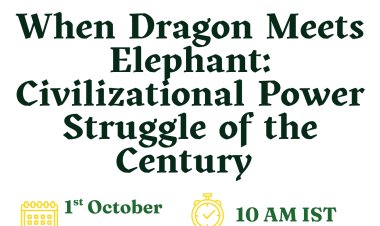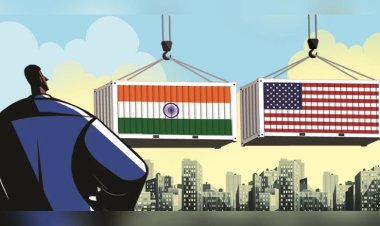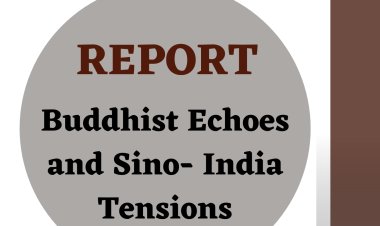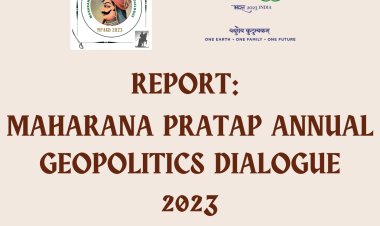Book Review | Decoding 'Terror Financing in Kashmir' and its complex tapestry
This is a review of the book "Terror Financing in Kashmir," published by Routledge and authored by Dr. Abhinav Pandya, the CEO and Founder of Usanas Foundation. The book provides a thorough analysis of the financing of terrorism in the Kashmir region, examining the various sources of funding and the methods used to transfer and distribute these funds. The author draws on a wide range of sources, including interviews with individuals involved in the financing of terrorism, to provide a comprehensive and insightful overview of this complex issue.
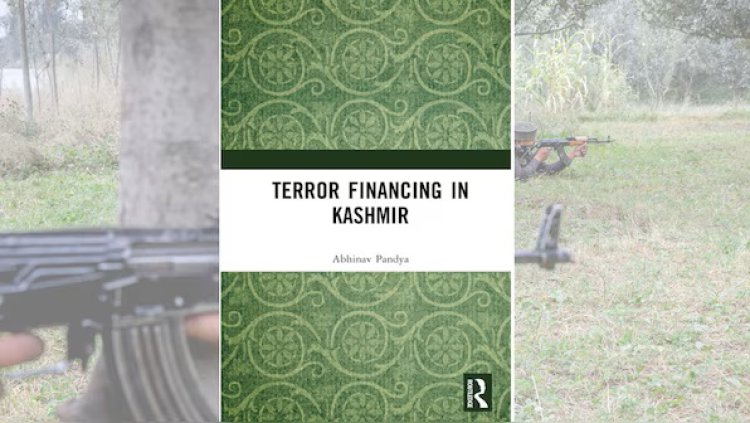
Book Review
By Dr. Abhinav Pandya
In a groundbreaking exploration of the intricate web of terror financing, Abhinav Pandya’s recent publication, Terror Financing in Kashmir, emerges as a pivotal addition to the discourse on counterterrorism. The complexities surrounding the funding of terrorism have long captivated experts, both within academia and the active realms of counterterrorism efforts. Pandya’s work distinguishes itself by shining a spotlight on the lesser-explored landscape of Kashmir, unravelling the complex and multi-layered system orchestrated by Pakistan to sustain militant activities in the region.
Early phase: 1990-96
The early 1990s witnessed a reliance on cash couriers exploiting the porous borders, particularly the Line of Control (LoC), which demarcates India and Pakistan in Jammu and Kashmir. Pandya’s meticulous examination reveals how separatist factions, particularly Jamaat-e-Islami, procured funds through a combination of donations and extortion, with backing from Pakistan. The establishment of the Hurriyat Conference in 1993 marked a turning point, necessitating financial resources for various operational aspects, including cadre remuneration, publicity, media operations and international travel.
As militancy expanded, the landscape of terror financing transformed incorporating narcotics smuggling as a formidable means of resource mobilization. Pandya’s scholarly discourse delves extensively into the intricate intricacies of drug routes, complemented by a comparative analysis of price differentials originating from the Af-Pak border to the Indian markets where these illicit transactions were ultimately transacted.
Second phase: 1996-2005
The post-1996 period marked a shift with the emergence of new insurgent entities like Lashkar-e-Taiba and Jaish-e-Mohammed. In response to heightened security measures, Pakistan recalibrated its approach by dissociating drug conduits from terrorist infiltration channels. A significant development during this phase was the pronounced reliance on hawala, an informal financial mechanism, introducing a layer of financial opacity that hindered easy tracking by authorities.
The operationalisation of hawala in terror financing introduced a layer of financial opacity, conferring a discreet and intricate trail that impeded facile tracking by authorities. Grounded in trust-based networks, the hawala system facilitated the cross-border movement of funds with diminished visibility, thereby affording a measure of resilience against counterterrorism endeavours. The accentuation of hawala during this phase underscored the adaptable stratagem employed by Pakistan to negotiate the evolving security milieu, ensuring a continual influx of financial resources to underpin militant endeavours in the Kashmir region.
The advent of novel entities and the strategic segregation of funding channels underscored the fluid and dynamic character of the conflict, mandating a perpetual recalibration in response to evolving security imperatives. The centrality of hawala in the orchestration of terror financing epitomised a calculated and responsive approach, adding layers of intricacy to the persistent challenges confronting counterterrorism initiatives in the Kashmiri theatre.
Third phase: 2005 onwards
Subsequent to the preceding phase, a proliferation of innovative fundraising modalities manifested, indicative of a departure from conventional fiscal practices within the context under examination. Noteworthy among these stratagems were the inception of atypical revenue streams, exemplified by the sale of medical seats, exploitation of Haj tours and utilisation of the LoC trade for surreptitious smuggling operations.
The ensuing period, meticulously chronicled within the scholarly work, unfolded a comprehensive and nuanced inventory of fundraising methodologies, emblematic of a complex and sophisticated financial landscape. The detailed exposition encompasses a spectrum of practices, including but not limited to over-invoicing and under.
A thorough examination of financial allocations for militant recruitment and training reveals a significant contrast between Pakistan and India. Pakistan allocates a comparatively modest sum of approximately INR 2.5 to 3 lakh per militant, standing in stark juxtaposition to the substantial daily financial expenditures incurred by Indian security forces in their relentless counter-terrorism operations. The scholarly investigation outlined in the article unveils the substantial involvement of mainstream institutions—ranging from politics and administration to banking, academia, and media—within the intricate network of terror financing. This involvement is noted for contributing to the establishment of a parallel economic framework within the state.
Pandya’s thorough empirical inquiry, coupled with confidential discussions involving various stakeholders such as militants, Over Ground Workers (OGWs), clerics, leaders of extremist organisations and representatives from law enforcement, military establishments, Hawala operators, and financial coordinators linked to Pakistan’s intelligence apparatus (ISI), serves as the linchpin of methodologically rigorous research. The preservation of anonymity in numerous instances underscores the sensitivity of the subject matter, adhering to ethical standards and ensuring the security of those participating.
Pandya’s Terror Financing in Kashmir meticulously explores the intricate landscape of terror financing in the region. Despite its commendable contributions, the book has certain limitations. One significant limitation is its predominant focus on Pakistan’s role in terror financing in Kashmir, which could potentially overshadow a more nuanced analysis. A comprehensive approach should include the involvement of other external actors and considerations of intricate local dynamics. This narrow perspective might restrict the book’s ability to offer a holistic understanding of the multifaceted factors contributing to terror financing in Kashmir. While Pandya’s research undeniably enriches the discourse, addressing this limitation with a more balanced approach could have enhanced its scholarly depth, objectivity, and practical applicability in guiding effective strategies for managing the complexities of terror financing in the Kashmir region.
Nevertheless, Terror Financing in Kashmir goes beyond mere academic scrutiny; it emerges as an essential reference for scholars, counterterrorism researchers, law enforcement officials, diplomat, and the intelligence community. Pandya’s work stands out by avoiding any anti-India bias, presenting a unique and impartial analysis of Pakistan’s role in the Kashmir conflict. The scholarly depth and analytical rigour evident throughout the book constitute a substantial contribution to grasping the nuanced dynamics of the region.
From the initial reliance on cash couriers to the adaptive strategies in later phases, including the prominence of hawala and the intricacies of various financing methods, the book reveals the resilience of the terror financing network. As we navigate the intricate landscape of terror financing in Kashmir, Pandya’s comprehensive research, coupled with confidential interviews, offers an unparalleled, unbiased perspective on the evolving dynamics of the conflict, establishing his work as an indispensable asset for those grappling with the complexities of terrorism in the region.
Disclaimer: This paper is the author's individual scholastic contribution and does not necessarily reflect the organization's viewpoint. The book review was first published in Firstpost.
Toseef Ahmad Bhat is a Kashmir-based scholar with expertise in the field of South Asian Politics. His significant area of study is Kashmir.

